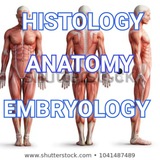Anatomy embryology histology videos & books
Ans: D. Motor speech
Motor speech defect is also called apraxia of speech.
Injury to the Broca's area/left inferior frontal gyrus causes motor
speech defect.
BDC 7th edition, volume 4, page no 129
Motor speech defect is also called apraxia of speech.
Injury to the Broca's area/left inferior frontal gyrus causes motor
speech defect.
BDC 7th edition, volume 4, page no 129
👍12❤4
Anonymous Quiz
17%
a) First
39%
b) Second
31%
c) Third
14%
d) Seventh
👍13❤4🥰3👏2
Forwarded from Paediatrics videos & books
Anonymous Quiz
24%
a) 1 year
32%
b) 2 year
28%
c) 3 year
15%
d) 4 year
👍18❤5😢2
Anatomy embryology histology videos & books
Correct Answer -C
Third
"Typical intercostal nerves are the ones that are confined to their
own intercostal spaces in the thoracic wall. The third, fourth, fifth and
sixth intercostal nerves are the typical nerves"
Third
"Typical intercostal nerves are the ones that are confined to their
own intercostal spaces in the thoracic wall. The third, fourth, fifth and
sixth intercostal nerves are the typical nerves"
👍6❤5
Forwarded from Orthopaedics
Anonymous Quiz
48%
A)Great toe MTP joint
25%
b) Medial malleolus
16%
c) Lateral Malleolus
10%
d) Shin of tibia
👍10👎3
Forwarded from Anatomy embryology histology videos & books
Anonymous Quiz
20%
a) Thigh
63%
b) Calf
10%
c) Buttocks
6%
d) Feet
👍10
Forwarded from Physiology
Anonymous Quiz
11%
A. Facilitated diffusion
32%
B. Na+-Ca2+ exchanger
42%
C. Simple diffusion
14%
D. Coupled transport
👍16❤1
Anatomy embryology histology videos & books
Correct Answer - B
Ans:B.
Calf Calf Aorta and Common liac- Buttocks Femoral Artery- Thigh Superficial femoral artery⁃ Calf and popliteal artery Posterior tibial Artery- Feet BDC 7th edition, volume 2, page no 137.
Ans:B.
Calf Calf Aorta and Common liac- Buttocks Femoral Artery- Thigh Superficial femoral artery⁃ Calf and popliteal artery Posterior tibial Artery- Feet BDC 7th edition, volume 2, page no 137.
👍6
All of the following are structures
associated with pterygopalatine fossa,
EXCEPT: #NEET PG #INICET #PYQ #NEET
associated with pterygopalatine fossa,
EXCEPT: #NEET PG #INICET #PYQ #NEET
Anonymous Quiz
13%
a) Pterygopalatine ganglion
33%
b) Mid third of maxillary artery
25%
c) Maxillary nerve
29%
d) Greater petrosal nerve
👍7👎6❤4🥰1
Anatomy embryology histology videos & books
Correct Answer-B
The pterygopalatine fossa is the region between the
pterygomaxillary fissure and the nasal cavity
* The fossa accommodates branches of the maxillary nerve [cranial
nerve (CN) V-2], the pterygopalatine ganglion, the terminal
branches of the maxillary artery, and greater superficial petrosal
nerve.
The pterygopalatine fossa is the region between the
pterygomaxillary fissure and the nasal cavity
* The fossa accommodates branches of the maxillary nerve [cranial
nerve (CN) V-2], the pterygopalatine ganglion, the terminal
branches of the maxillary artery, and greater superficial petrosal
nerve.
👍21❤5
Anatomy embryology histology videos & books
Correct Answer -C
C i.e. subluxation of proximal radio ulnar joint
. If a young child is lifted by the wrist, the head of the radius may be
pulled partly out of the annular ligament, i.e., subluxation of the head
of the radius.
It occurs when forearm is pronated, elbow is extended and
longitudinal traction is applied to the hand or wrist, e.g., lifting,
spinning or swinging a child with wrist or hand. Pulled elbow most
commonly occurs between the age of 2-5 years
C i.e. subluxation of proximal radio ulnar joint
. If a young child is lifted by the wrist, the head of the radius may be
pulled partly out of the annular ligament, i.e., subluxation of the head
of the radius.
It occurs when forearm is pronated, elbow is extended and
longitudinal traction is applied to the hand or wrist, e.g., lifting,
spinning or swinging a child with wrist or hand. Pulled elbow most
commonly occurs between the age of 2-5 years
👍20❤1
Anatomy embryology histology videos & books
Correct Answer -C
Ans. is 'c' i.e., Ventral rami of thoracic spinal nerves
Ventral rami of upper 11th thoracic spinal nerves are known as
intercostal nerves and ventral ramus of T12 is known as subcostal
nerve.
Upper six intercostal nerves supply thoracic wall whereas lower five
intercostal nerves and subcostal nerve supply thoracic and anterior
abdominal walls and hence known as thoracoabdominal nerves.
Upper two intercostal nerves also supply the upper limb.
Thus only 3rd to 6th are called typical intercostal nerves.
Ans. is 'c' i.e., Ventral rami of thoracic spinal nerves
Ventral rami of upper 11th thoracic spinal nerves are known as
intercostal nerves and ventral ramus of T12 is known as subcostal
nerve.
Upper six intercostal nerves supply thoracic wall whereas lower five
intercostal nerves and subcostal nerve supply thoracic and anterior
abdominal walls and hence known as thoracoabdominal nerves.
Upper two intercostal nerves also supply the upper limb.
Thus only 3rd to 6th are called typical intercostal nerves.
👍13❤6🥰1
12. Light bulb sign is seen in
Anonymous Quiz
25%
A. Anterior dislocation of shoulder [
56%
B. Posterior dislocation of shoulder
13%
C. Inferior dislocation of shoulder
6%
D. Fracture of neck of humerus
👍7❤3
Anatomy embryology histology videos & books
12. Light bulb sign is seen in
In posterior dislocation of shoulder there is
internal rotation of humeral head.
◦ Hence, in the AP film, the shape of humeral
head appears like that of Electric bulb called
as 'light bulb sign.'
internal rotation of humeral head.
◦ Hence, in the AP film, the shape of humeral
head appears like that of Electric bulb called
as 'light bulb sign.'
👍17❤8
👎7❤3🔥2👍1👏1👌1
